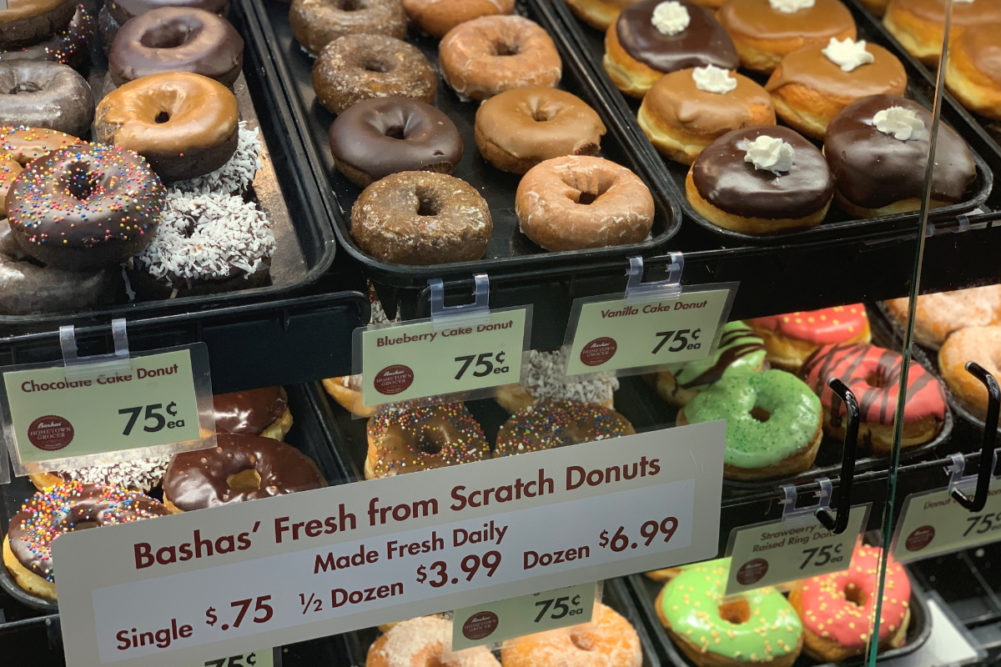KANSAS CITY, MO. - When it comes to frying donuts, hard fats, including high oleic soybean shortening, are the best fit, said Roger Daniels, vice president of research, development and innovation at Memphis, Tenn.-based Stratas Foods.
“If you have a hard fat, that prevents more oil from transferring to the surface of the donut,” Daniels said. “Also, the longer the donut sits under a heat lamp, the more grease is going on the donut. A donut is a sponge. But a hard fat solidifies post-fry.”
Stratas’ Golden Flex donut frying shortening is an all soybean formula shortening made from high oleic soybean and soybean oils. It replaces the need for PHOs (partially hydrogenated oils), whose nutritional negative was that the process to achieve them also caused trans fat. Golden Flex is able to achieve PHO attributes without trans by using the process of IE (Enzymatic Interesterification) and Flex technology.
“Golden Flex delivers a combination of shortening components which contribute to the desired flavor components of a dessert donut. The Stratas approach achieves PHOs performance without the PHOs,” Daniels said.
The IE process creates an integrated shortening as opposed to a blend of oil and fat components. Utilization of high oleic soybean oil confers frying stability and the IE process places this oil input into a preferred ratio with soybean oil to yield a shortening with the desired functional characteristics.
Daniels said that an all soybean formula shortening made from high oleic soybean and soybean oils is ideal for this process.
“During the frying operation, the donut dough is placed in the fryer and subjected to the frying process. This is in essence a dehydration process as the moisture in the dough is liberated as steam and the remaining dough components, primarily carbohydrates and protein, are transformed into a donut with the desired finished product characteristics,” he said.
According to Daniels, three critical items come to mind when selecting a frying shortening for donut optimization: flavor, desired appearance and aroma. Flavor is the most important, but appearance and aroma can also make or break a donut.
The choice of frying shortening greatly impacts whether a donut has that optimal golden brown appearance. All frying shortenings progress from fresh to spent due to degradation reactions in the fryer driven primarily by heat and moisture. These two things can shorten the life of the shortening, causing it to break down and darken, leading to darker fried products over time.
You also want to produce a dry-looking donut. During the frying process, the donut gives up water as steam and the carbohydrates and proteins form the finished texture. The frying shortening primarily serves as a heat transfer source. During this temperature driven process, the dough takes up frying shortening as the water is liberated from the dough.
When the donut is removed from the fryer the donuts are rested to allow them to cool. It is at this point that the frying shortening contributes functionality in minimizing surface oil development on the donut.
“Stratas’ Golden Flex donut frying shortening is a shortening which is comprised of oil and fat,” Daniels said. “This means that this shortening is formulated with components that are liquid (e.g. oil) at room temperature and components which are solid (e.g. fat) at room temperature. This blend of oils coupled with our Flex technology process serves to minimize the fried product surface oil phenomena in dessert donut applications.”
Another role of the shortening is to accent the donut’s aroma. Dessert donuts prepared in a donut shop benefit from frying in oxidatively stable frying shortenings. Stratas’ Golden Flex donut frying shortening is made from high oleic soybean and soybean oils, offering a traditional PHO (partially hydrogenated oil) aroma, without the actual PHOs.
This story is from the July 2020 issue of Supermarket Perimeter. To view the full magazine, click here.

